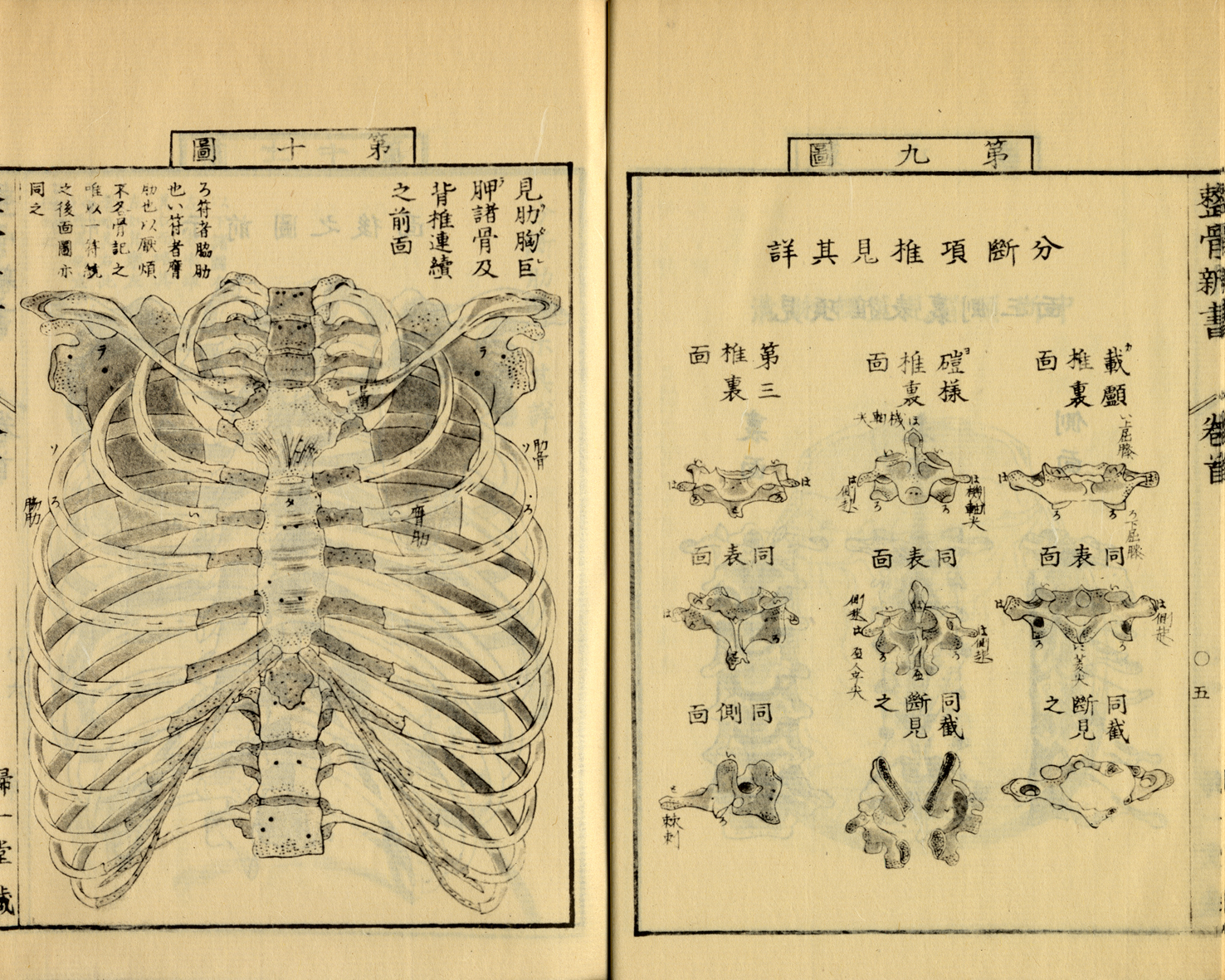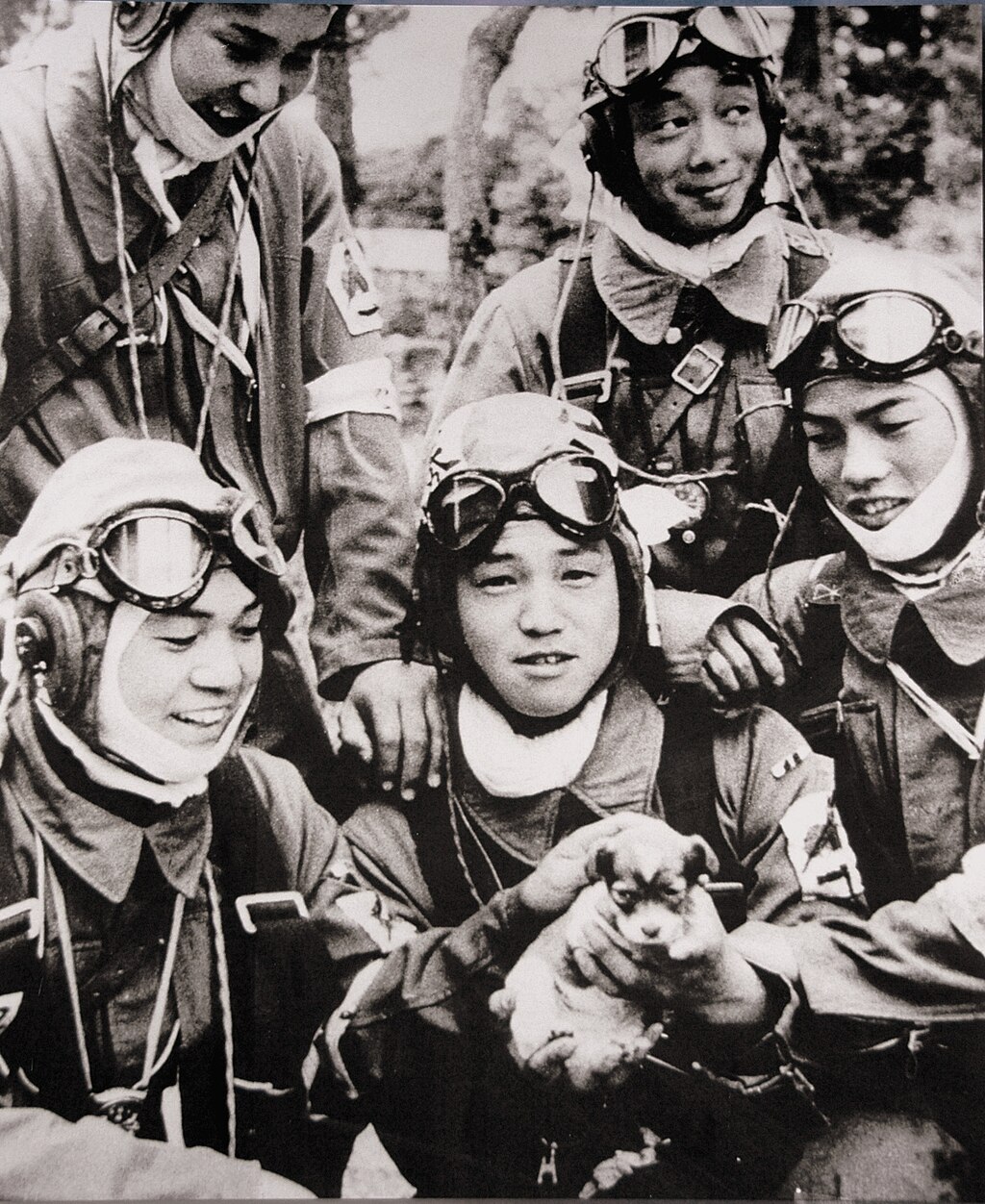
大貫恵美子
Emiko Ohnuki-Tierney,
b.1934

☆大貫恵美子教授は、ウィスコンシン大学マディソン校のウィリアム・F・ヴィラス人類学教授[1]。英語と日本語の単著14冊に加え、多数の論文を執筆している。彼女の著書は イタリア語、韓国語、ポーランド語、ロシア語など多くの言語に翻訳されている。2009年に米国議会図書館の現代文化特別講座に任命され、2010年には パリ高等研究所のフェローに就任した。アメリカ芸術科学アカデミーの会員であり、同アカデミーの中西部評議員、ジョン・サイモン・グッゲンハイム・フェ ローシップの受賞者でもある。
| Emiko
Ohnuki-Tierney (Japanese: 大貫恵美子 born 1934) is a noted anthropologist
and the William F. Vilas Professor of Anthropology[1] at the University
of Wisconsin–Madison. She is the author of fourteen single-authored
books in English and in Japanese, in addition to numerous articles. Her
books have been translated into many other languages, including
Italian, Korean, Polish and Russian. Ohnuki-Tierney was appointed the
Distinguished Chair of Modern Culture at the Library of Congress in DC
in 2009 and then in 2010 Fellow of Institut d’Études Avancées-Paris.
She is a member of The American Academy of Arts and Sciences, its
mid-west council member, and a recipient of John Simon Guggenheim
Fellowship among other prestigious awards. |
ウィ
スコンシン大学マディソン校のウィリアム・F・ヴィラス人類学教授[1]。英語と日本語の単著14冊に加え、多数の論文を執筆している。彼女の著書はイタ
リア語、韓国語、ポーランド語、ロシア語など多くの言語に翻訳されている。2009年に米国議会図書館の現代文化特別講座に任命され、2010年にはパリ
高等研究所のフェローに就任した。アメリカ芸術科学アカデミーの会員であり、同アカデミーの中西部評議員、ジョン・サイモン・グッゲンハイム・フェロー
シップの受賞者でもある。 |
| Education A native of Japan, born in Kobe 1934. Ohnuki-Tierney received a B.A. degree from Tsuda College in Tokyo and came to the United States on a Fulbright Scholarship. Her interest in anthropology began when someone told her that she was making too many "cultural" mistakes and should take a course in anthropology. In 1968, she received her Ph.D. in anthropology at the University of Wisconsin-Madison. |
教育 1934年神戸生まれ。津田塾大学で学士号を取得後、フルブライト奨学金を得て渡米。人類学に興味を持ち始めたのは、ある人から「文化的」な間違いが多す ぎるから人類学の講義を受けるべきだと言われたことがきっかけだった。1968年、ウィスコンシン大学マディソン校で人類学の博士号を取得した。 |
| Scholarship Ohnuki- Tierney's first work is a history of the Detroit Chinese community.[2] She next turned to the Sakhalin Ainu resettled in Hokkaido, resulting in two books and several articles.[3][4][5] Realizing the limitation of studying a "memory culture," she shifted her focus to the contemporary Japanese. Illness and Culture in Contemporary Japan was her first book on the Japanese among whom she found "cultural germs" and a profusion of "urban magic."[6] This helped her to realize the limitations of only studying a people and their way of life at a particular point in time. All her subsequent works have considered long periods of Japanese history in order to understand "culture through time." Her focus has been on various symbols of identities of the Japanese, such as rice and the monkey, within broader socio-political contexts and in comparative perspective.[7][8] Ohnuki-Tierney has been working on the question of power of symbols and its absence in political spaces since the mid-1980s. Her most recent works began as a study of symbolism of cherry blossoms and their viewing in relation to Japanese identities and led to an exploration of the cherry blossom symbol as a major trope utilized to both encourage and aestheticize sacrifice for the country during its military period. This research culminated in two recent books, Kamikaze, Cherry Blossoms, and Nationalisms: The Militarization of Aesthetics in Japanese History[9] and Kamikaze Diaries: Reflections on Japanese Student Soldiers.[10] She has continued to work on the question of "aesthetic" (broadly defined), ubiquitous in wars of all types, from "tribal warfare" to conflicts between nation-states. This is done against the basic theoretical question of communicative opacity—how people fail to recognize the absence of communication. Ohnuki-Tierney's most recent book is titled Flowers That Kill: Communicative Opacity in Political Spaces (2015).[11] |
奨学金 大貫ティアニーの最初の著作は、デトロイトの中国人コミュニティの歴史である[2]。 次に彼女は、北海道に移住したサハリン・アイヌに目を向け、2冊の本と数本の論文を発表した[3][4][5]。「記憶文化」を研究することの限界に気づ いた彼女は、現代の日本人に焦点を移した。『現代日本における病と文化(日本人の病気観)』は、彼女が「文化的病原菌」と「都市魔術」の氾濫を発見した日 本人に関する最初の著作である[6]。その後の彼女の作品はすべて、「時を経た文化」を理解するために、日本の長い歴史を考察したものである。彼女の焦点 は、米や猿といった日本人のアイデンティティを象徴する様々なシンボルを、より広範な社会政治的文脈の中で、また比較の観点から考察することであった [7][8]。 大貫=ティアニーは1980年代半ばから、政治空間における象徴の力とその不在の問題に取り組んできた。彼女の近作は、日本人のアイデンティティに関連し た桜のシンボリズムとその花見の研究として始まり、軍事政権時代に国の犠牲を奨励し美化するために利用された主要な図式としての桜のシンボルの探求につな がった。この研究は、2冊の近著『神風、桜、そして国民主義』に結実した: The Militarization of Aesthetics in Japanese History[9]』と『Kamikaze Diaries: Reflections on Japanese Student Soldiers』である[10]。 彼女は、「部族間の戦い」から国民国家間の紛争まで、あらゆるタイプの戦争に偏在する「美学」(広義)の問題に取り組み続けている。これは、人々がいかに してコミュニケーションの不在を認識できないかという、コミュニケーション的不透明性という基本的な理論的問題に対して行われる。 大貫=ティアニーの近著のタイトルは『花は人を殺す』である: 政治空間におけるコミュニケーションの不透明性』(2015年)である[11]。 |
| References 1. Campus honors eight faculty with named professorships 2. 1964. The Detroit Chinese: A Study of Socio-Cultural Changes in the Detroit Chinese Community from 1872 through 1963. Hard-cover book of a type-written ms. 119 pp. Housed at Detroit Public Library, UCLA Library, etc. 3. 1969. Sakhalin Ainu Folklore. Anthropological Studies No. 2. Washington, D.C.: American Anthropological Association. 4. 1974. The Ainu of the Northwest Coast of Southern Sakhalin. New York: Holt, Rinehart & Winston. Reprinted in 1984 by: Prospect Heights, Illinois: Waveland Press. 5. 1981. Illness and Healing among the Sakhalin Ainu: A Symbolic Interpretation. Cambridge, UK: Cambridge University Press. 6. 1984. Illness and Culture in Contemporary Japan: An Anthropological View. Cambridge, UK: Cambridge University Press. 7. 1987.The Monkey as Mirror: Symbolic Transformations in Japanese History and Ritual. Princeton University Press. 8. 1993. Rice as Self: Japanese Identities Through Time. Princeton University Press. 9. 2002. Kamikaze, Cherry Blossoms, and Nationalisms: The Militarization of Aesthetics in Japanese History. University of Chicago Press. One of five finalists for the non-fiction category of the Kiriyama Prize.(Also in Italian translation) 10. 2006. Kamikaze Diaries: Reflections of Japanese Student Soldiers. University of Chicago (Also in Russian and Polish translation) ISBN 11. Flowers That Kill: Communicative Opacity in Political Spaces | Emiko Ohnuki-Tierney. Stanford University Press. 2015. ISBN 9780804794107. |
参考文献 1. キャンパスが8人の教授を称える 2. 1964. デトロイト華人: The Detroit Chinese: A Study of Socio-Cultural Changes in the Detroit Chinese Community from 1872 through 1963. タイプライター原稿のハードカバー本。デトロイト公共図書館、UCLA図書館などに所蔵されている。 3. 1969. 樺太アイヌの民俗. Anthropological Studies No. ワシントンD.C.:アメリカ人類学会。 4. 1974. The Ainu of the Northwest Coast of Southern Sakhalin. New York: Holt, Rinehart & Winston. イリノイ州プロスペクトハイツ: Waveland Press. 5. 1981. 樺太アイヌの病と癒し: A Symbolic Interpretation. ケンブリッジ大学出版局。 6. 1984. 現代日本における病と文化: 人類学的視点から. ケンブリッジ大学出版局。 7. 1987.鏡としての猿: 日本の歴史と儀礼における象徴的変容. プリンストン大学出版局。 8. 1993. 自己としての米-時を経た日本人のアイデンティティ-. プリンストン大学出版局。 9. 2002. 神風、桜、そして国民主義: 日本史における美意識の軍事化. シカゴ大学出版局。桐山賞ノンフィクション部門最終候補5作品のひとつ。 10. 2006. 神風日記: 日本人学生兵士の回想。シカゴ大学(ロシア語、ポーランド語訳もある)ISBN 11. 人殺しの花: 政治空間におけるコミュニケーション的不透明性|大貫ティアニー恵美子. スタンフォード大学出版。2015. ISBN 9780804794107. |
| An excerpt from Kamikaze Diaries |
|
| Emiko Ohnuki-Tierney (née en 1934 à Kobe) est une anthropologue américaine, spécialiste du Japon, professeur à l'université du Wisconsin. Biographie  Carte montrant la répartition des Aïnous en Asie Originaire du Japon, Emiko Ohnuki-Tierney a reçu un diplôme universitaire du Collège Tsuda de Tokyo avant de venir étudier aux États-Unis grâce à une bourse Fulbright. Son intérêt pour l'anthropologie a commencé quand quelqu'un lui a dit qu'elle faisait trop d'erreurs culturelles et qu'elle devait suivre un cours en anthropologie. Terrains de recherche Des communautés chinoises de Détroit aux Ainous d'Hokkaido Son premier travail de Master a été sur l'étude de la communauté chinoise de la chinatown de Detroit en 1963. Pour sa thèse, elle a ensuite abordé les Aïnous de Sakhaline réinstallés à Hokkaido de 1968 à 19801,2. La maladie et la médecine au Japon  Illustration d'os dans le livre Seikotsu shinsho (Nouveau livre d’Ostéopathie) publié par le pionnier japonais Kagami Bunken (1755-1819), un médecin traditionnel qui construit sa recherche sur le travail de dissection (1810) Se rendant compte de la limitation de l'étude de la mémoire "culturelle", elle a alors tourné son attention vers l'étude des Japonais contemporains, en particulier autour de la notion d'illness, de "maladie". "Maladie et culture dans le Japon contemporain" fut son premier livre sur le Japon, où elle découvrit des 'germes culturels' et une profusion de 'magie urbaine'3. Cela l'a aidée à comprendre les limites de l'étude d'un peuple et de son mode de vie à un moment particulier de son histoire. Toutes ses œuvres suivantes ont pris en compte de longues périodes de l'histoire du Japon afin de comprendre la "culture à travers le temps" . Son point de vue s'est attaché à différents symboles de l'identité japonaise, tels que le riz et le singe, dans des contextes socio-politiques plus vastes et dans une perspective comparative4,5. Les Kamikazes et la militarisation du Japon  Presque tous les kamikaze étaient âgés de 17 à 22 ans  Des lycéennes de Chiran saluent le décollage de pilotes kamikaze avec des branches de cerisiers, le 12 avril 1945 Emiko Ohnuki-Tierney a travaillé sur le pouvoir des symboles et son absence dans les espaces politiques. Ses travaux les plus récents commencent comme une étude du symbolisme des cerisiers en fleur et de leur contemplation, en relation avec les identités japonaises. Cela a conduit à une exploration du symbole des cerisiers en fleur comme un tropisme majeur, tant pour encourager que pour esthétiser le sacrifice pour le pays au cours de sa période de militarisation. Cette recherche a abouti à deux livres récents, "Kamikaze, cerisiers en fleur, et nationalismes: La militarisation de l'esthétique dans l'histoire du Japon"6 et "Journaux intimes de Kamikaze: Réflexions sur les soldats étudiants japonais"7. Elle a continué à travailler sur la question de “l'esthétique”, omniprésente dans les guerres de toutes sortes, que ce soit dans les «guerres tribales» ou des conflits entre États-nations. Cela se fait à l'encontre de la question théorique de base sur l'opacité de la communication - comment les gens échouent à reconnaitre l'absence de communication - pour laquelle l'esthétique joue un rôle. Elle a également publié un livre et un certain nombre d'articles sur l'alimentation dans la culture et la société ainsi que dans des essais critiques sur le 'global / local'. Reconnaissance académique Emiko Ohnuki-Tierney a été nommé présidente émérite de la culture moderne à la Bibliothèque du Congrès de Washington en 2009, puis en 2010, membre de l'Institut d'Études Avancées à Paris. Elle est membre de l'Académie américaine des arts et des sciences et récipiendaire de la bourse John Simon Guggenheim parmi d'autres prestigieuses récompenses. |
大貫悌子(1934年神戸生まれ)は、日本を専門とするアメリカの人類学者であり、ウィスコンシン大学教授である。 略歴  アジアにおけるアイヌの分布図 日本出身。津田塾大学を卒業後、フルブライト奨学金を得て渡米。文化的な間違いが多すぎるから人類学の講義を受けなさい」と言われたことがきっかけで、人類学に興味を持つ。 研究分野 デトロイトの中国人社会から北海道のアイヌまで 彼女の最初の修士論文は、1963年のデトロイトのチャイナタウンの中国人コミュニティの研究だった。修士論文では、1968年から198年にかけて北海道に定住したサハリンのアイヌ人について研究した01,2。 日本における病気と医療  解剖を研究の基礎とした伝統的な医師であった日本の先駆者、鏡文憲(1755-1819)が出版した『西洋骨新書』(1810年)の骨の図。 文化的」記憶の研究の限界に気づいた彼女は、その後、現代日本人の研究、特に病気の概念をめぐる研究に目を向けた。現代日本における病と文化』は、彼女が 初めて日本について書いた本であり、そこで彼女は「文化的病原菌」と「都市の魔術」の氾濫を発見した3。これにより彼女は、ある民族とその民族の歴史にお ける特定の瞬間における生活様式を研究することの限界を理解したのである。その後の彼女の作品はすべて、「時を経た文化」を理解するために、日本の歴史の 長い期間を考慮に入れている。彼の焦点は、米や猿といった日本人のアイデンティティの様々な象徴を、より広い社会政治的文脈の中で、比較の観点から研究す ることであった4,5。 カミカゼと日本の軍国主義化  自爆テロ犯のほとんど全員が17歳から22歳だった。  特攻隊員の離陸に桜の枝で敬礼する知覧の女学生たち(1945年4月12日) 大貫悌子氏は、政治空間におけるシンボルの力とその不在について研究してきた。彼女の最近の作品は、桜の花の象徴性と日本人のアイデンティティとの関連に おけるその熟考の研究として始まる。その結果、桜のシンボルは、軍国主義時代の日本の犠牲を奨励し、美化する、主要なトロピズムとしての探求につながっ た。この研究は、『カミカゼ、桜、ナショナリズム:日本史における美意識の軍事化』6と『カミカゼ・ダイアリー:日本人学徒兵の考察』7という2冊の近著 に結実した。彼女は、「部族間の戦争」であれ国家間の紛争であれ、あらゆる種類の戦争に遍在する「美学」の問題に取り組み続けている。これは、美学がその 役割を果たす「コミュニケーションの不透明性」--人はいかにしてコミュニケーションの不在を認識できないか--という基本的な理論的問題に反している。 また、「グローバル/ローカル」に関する批評的エッセイだけでなく、文化や社会における食に関する本や論文も多数発表している。 学術的評価 2009年、ワシントンD.C.の米国議会図書館の現代文化名誉教授に任命され、2010年にはパリのアンスティチュ・デチュード・アヴァンセのフェロー に任命された。また、アメリカ芸術科学アカデミーの会員であり、ジョン・サイモン・グッゲンハイム・フェローシップなどの名誉ある賞を受賞している。 |
| https://fr.wikipedia.org/wiki/Emiko_Ohnuki-Tierney |
|
リ ンク
文 献
そ の他の情報
Copyleft,
CC, Mitzub'ixi Quq Chi'j, 1996-2099